• December 5, 2013
The Pre-MIC3 workshop presentations are available online!
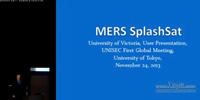
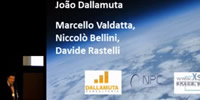
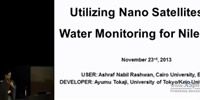
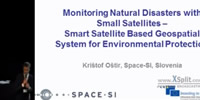
• Nov 23, 2013
PreMIC3 was successfully held on Nov. 23, 2013.
The best propsal award was given to the team of "Utilizing Nano
Satellites for water monitoring for Nile River" presented by Ashraf
Nabil Rashwan, Cairo University, Egypt and Ayumu Tokaji, University of
Tokyo, Japan.
• Nov 1, 2013
New regional co-coordinator:
Dr. Alsultan, at International Society of Photogrammetry and Remote Sensing
• Oct 23, 2013
See the criteria for
Best Proposal Award
• Oct 1, 2013
User-Developer Matching Results
Please welcome the five user & developer teams!
The selected five teams will work together and make presentation on
November 23 during the 1st UNISEC Global Meeting.
[Matching Results]
[UNISEC Global]
• Sep 24, 2013
New regional co-coordinator:
Professor Santoni, University of Rome la Sapienza, Italy
• Sep 7, 2013
We are pleased to share a wonderful news from Bulgaria.
The small satellite mission described in Bulgaria's MIC2 semi-finalist paper won the Bulgarian government grant for the implementation.
[ More ]
[ In Bulgarian ]
• Aug 23, 2013
New regional co-coordinator:
Professor Jeung, Seoul National Univ., Korea
• Aug 20, 2013
See the list of the User Needs
• Aug 20, 2013
Application of Satellite Users is closed.
Application of Satellite Developers is still open. Take a look at the list of the User Needs and select the problems you want to solve by using satellites!
• Aug 9, 2013
Online registration is now open
• Aug 4, 2013
Please welcome the Pre-3rd MIC Review Team!
• Aug 2, 2013
Please welcome the Pre-3rd MIC Regional Coordinators in the world!
• July 9, 2013
PreMIC3 Application Forms for satellite users and developers are available.
 Satellite Users Satellite Users
 Satellite Developers Satellite Developers
• July 4, 2013

Visit us on Facebook, too!
• July 1, 2013
First annoucement of Pre-MIC3
Presentations of pre-proposals for the 3rd Mission Idea Contest (Pre-MIC3) will be held during the UNISEC-Global meeting. Selected speakers will be invited to present their ideas regarding the potential utilization of micro/nano-satellites.
[Guidelines for pre-proposal]
•January 6, 2013
A Happy New Year!
The presentations of the MIC2 finalists are available online!
•December 2, 2012
The IAA book series Novel Ideas for Nanosatellite Constellation Missions was published (based on the ideas of MIC 1 finalists).
|
 |
Pictures from the Pre-MIC3 Workshop
-
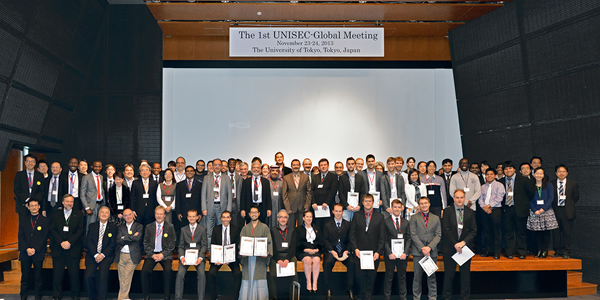
The Pre-3rd Mission Idea Contest Workshop was successfully held on November23, 2013.
-
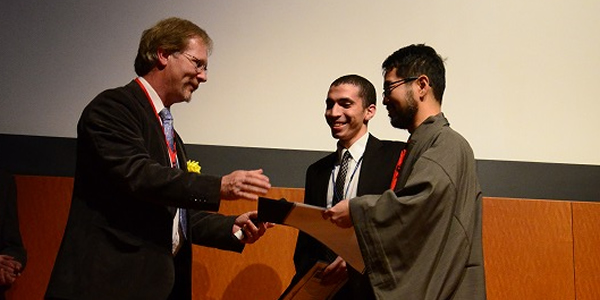
The Best Proposal Award was given from Prof. Steyn (Chairperson, left) to the team of "Utilizing Nano Satellites for water monitoring for Nile River" presented by Ashraf Nabil Rashwan (middle, Cairo Univ, Egupt) & Ayumu Tokaji (right, Univ of Tokyo, Japan)
-
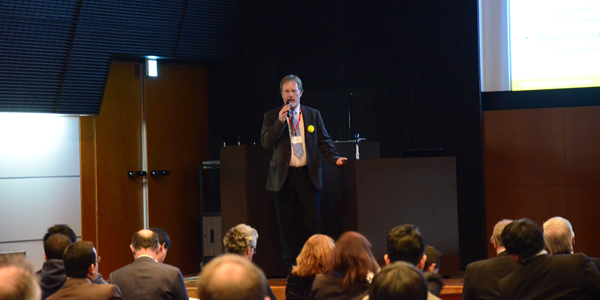
Pre-MIC3 Chair Professor Steyn at the workshop
-
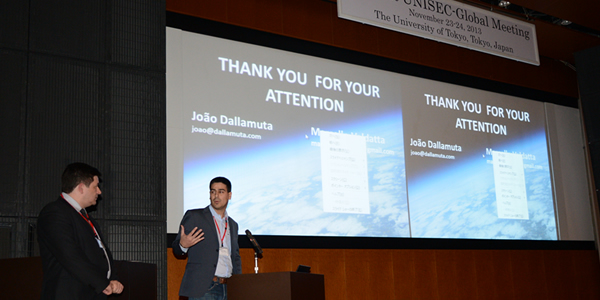
6S Initiative (Satellites - Schools - Science - Simple - Space – Students)
by Joao Dallamuta (left), Dallamuta Consultoria, Brazil and Marcello Valdatta, University of Bologna, Italy
-
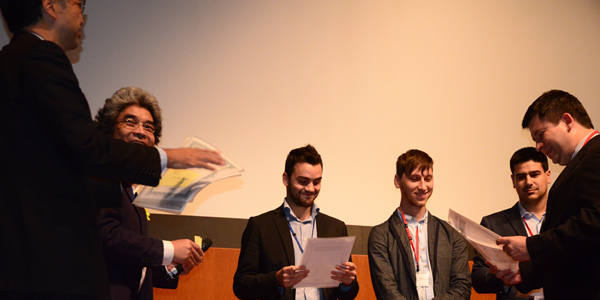
6S Initiative (Satellites - Schools - Science - Simple - Space – Students)
by the team of Dallamuta Consultoria (Brazil) and University of Bologna (Italy)
-
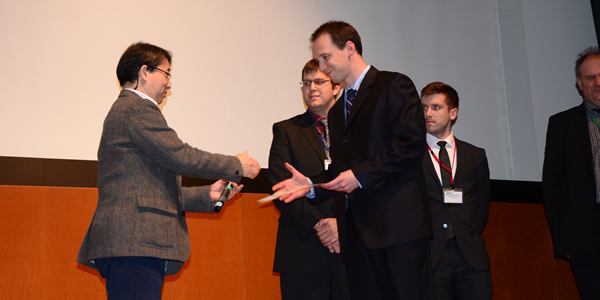
Terryl (University of Victoria, Canada) shakes hands with Professor Kawahara
-
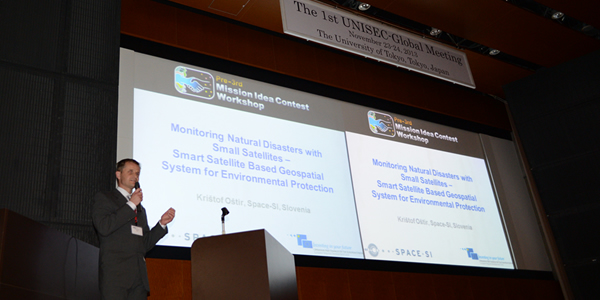
Kristof Ostir (Space-SI, Slovenia) presents at the Pre-MIC3 workshop, Nov 23, 2013, Tokyo, Japan
-
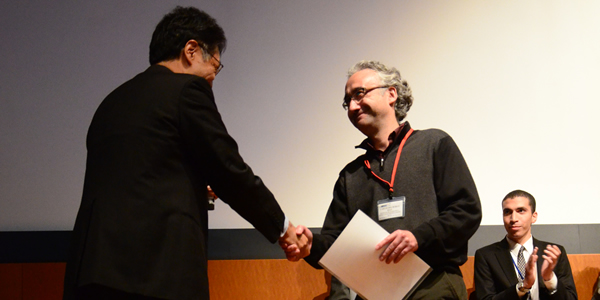
Carlos del Burgo (Instituto Nacional de Astrofísica, Óptica y Electrónica, Mexico, right) shakes hands with Prof. Nakasuka
-
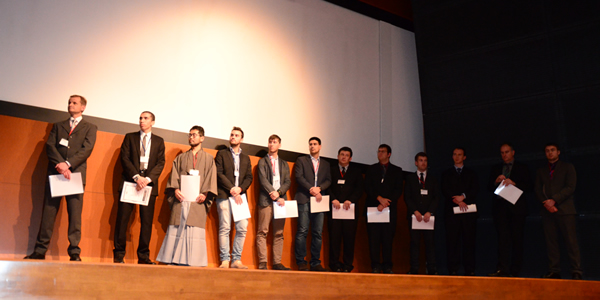
Pre-MIC3 presenters on the podium
-
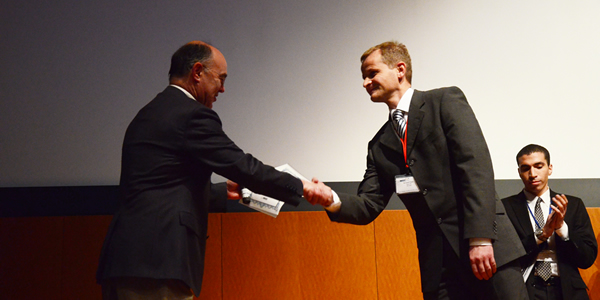
Prof. Sir Martin Sweeting (Surrey Satellite Technology Ltd., Surrey Space Centre) and Kristof Ostir (right)
-
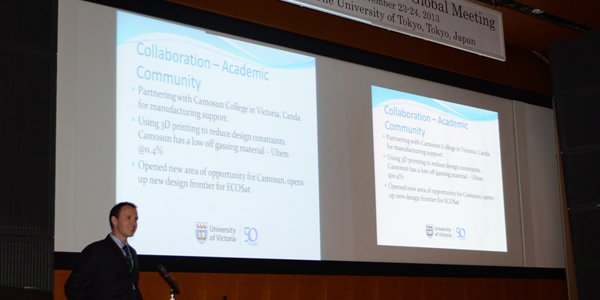
Terryl Brennan (University of Victoria, Canada) presents at the Pre-MIC3 workshop, Nov 23, 2013, Tokyo, Japan
-
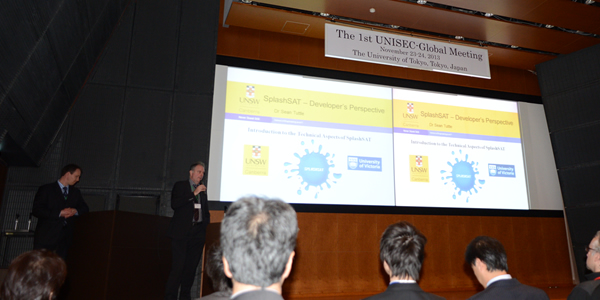
Microgravity Experiment Recovery Satellite (MERS):
The satellite developer Sean Tuttle (The University of New South Wales at Canberra,
Australia) presents with Terryl Brennan (University of Victoria, Canada)
-
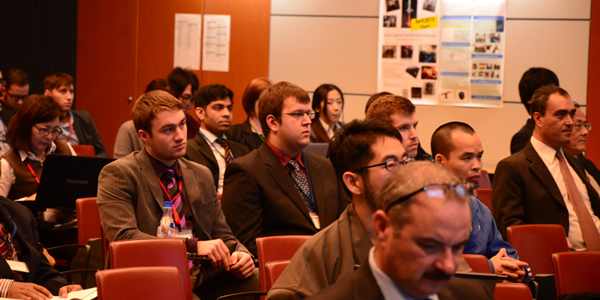
Audience at the Pre-MIC3 Workshop, Tokyo, Japan
-
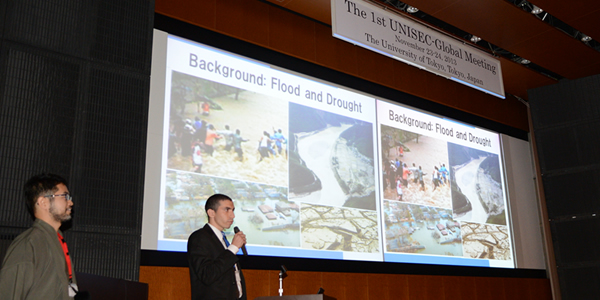
Utilizing Nano Satellites for water monitoring for Nile River:
Ahraf Nabil Rashwan (Cairo University, Egypt) presents at the Pre-MIC3 Workshop with the developer Ayumu Tokaji (Univ. of Tokyo, left).
-
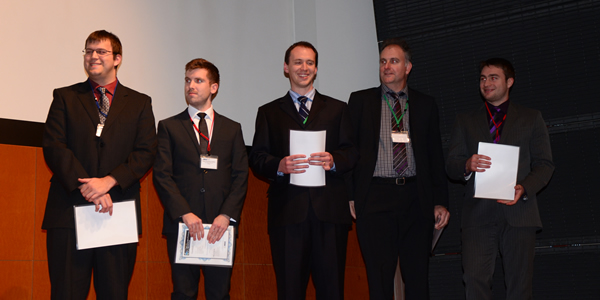
The "Microgravity Experiment Recovery Satellite (MERS)" team from Canada and Australia at the podium
-
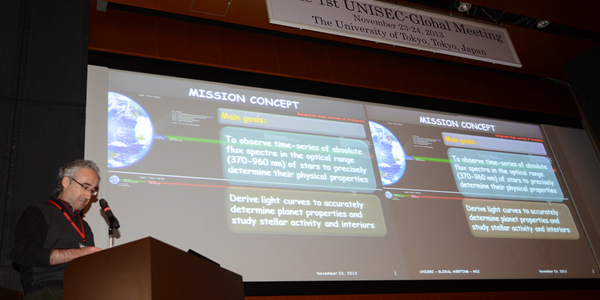
"PHASES: ultra-precise absolute flux spectroscopy of stars from space" by Carlos del Burgo (Instituto Nacional de Astrofísica, Óptica y Electrónica, Mexico)
-
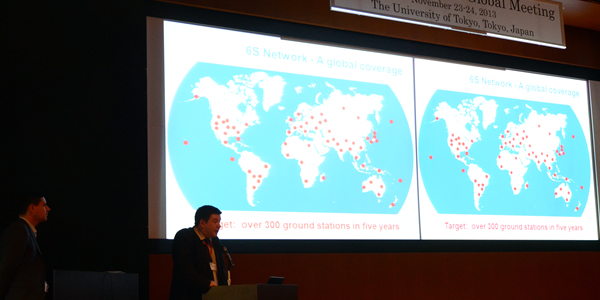
The Brazil and Italy team presenting "6S Initiative (Satellites - Schools - Science - Simple - Space – Students)"
-
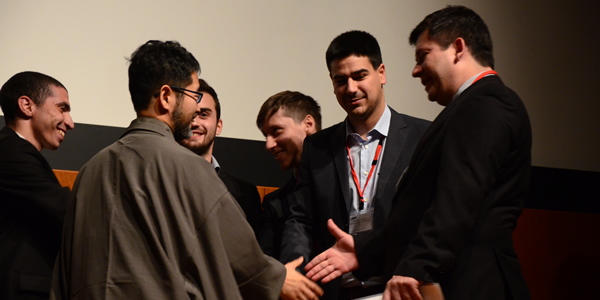
The satellite users and developers at the podium
|
The Mission Idea Contest (MIC) was established in 2010 to provide aerospace engineers, college students, consultants, and anybody interested in space with opportunities to present their creative ideas and gain attention internationally. The primary goal of MICs is to open a door to a new facet of space exploration and exploitation.
Development of micro/nano-satellites started as an educational and research program primarily at university laboratories. As the micro/nano-satellite technology matures, it has spread rapidly across the academics and industry for practical application.
Prior to the 3rd contest, the Pre-3rd Mission Idea Contest will be held in Japan in November 2013 as a match-making event for potential satellite users and developers.
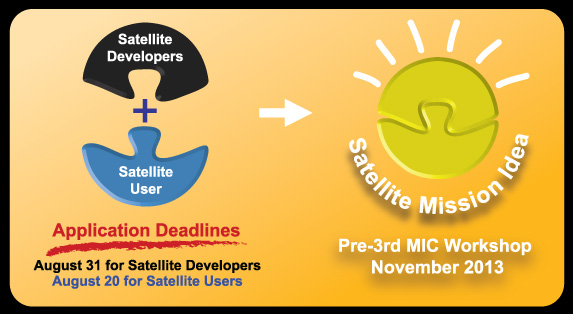
Reasons for participation
- Successful applicants will be invited to present in Tokyo at the 1st UNISEC Global Meeting which will be held in Nov.23-24. They also will be invited to the 5th Nano-satellite symposium if wish. (with full or partial travel funding support)
- User applicants can find satellite developers who can engineer their idea with micro/nano satellites.
- Developer applicants can help others with their technical skills and knowledge.
- High visibility for your ideas and the potential for future collaboration and support.
Evaluation Criteria for Best Proposal Award
- Evaluation criteria
| Mission uniqueness (presented by users) | 20 |
|
Impact to global society (presented by users) | 20 |
| Technical feasibility (presented by developers) | 30 |
| Technical risks (presented by developers) | 10 |
| Collaborative efforts (evaluated by reviewers) | 20 |
- Expected depth in technical presentation
Participants are not required to present detail satellite design, but
technical feasibility should be presented as well as technical risks.
Hence, the developers do not have to concentrate on a detailed
technical solution, but rather concentrate on the technical challenges
and how they plan to approach and solve them.
|









